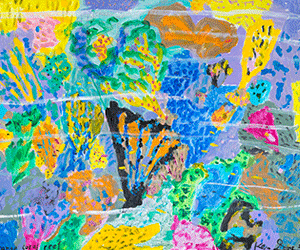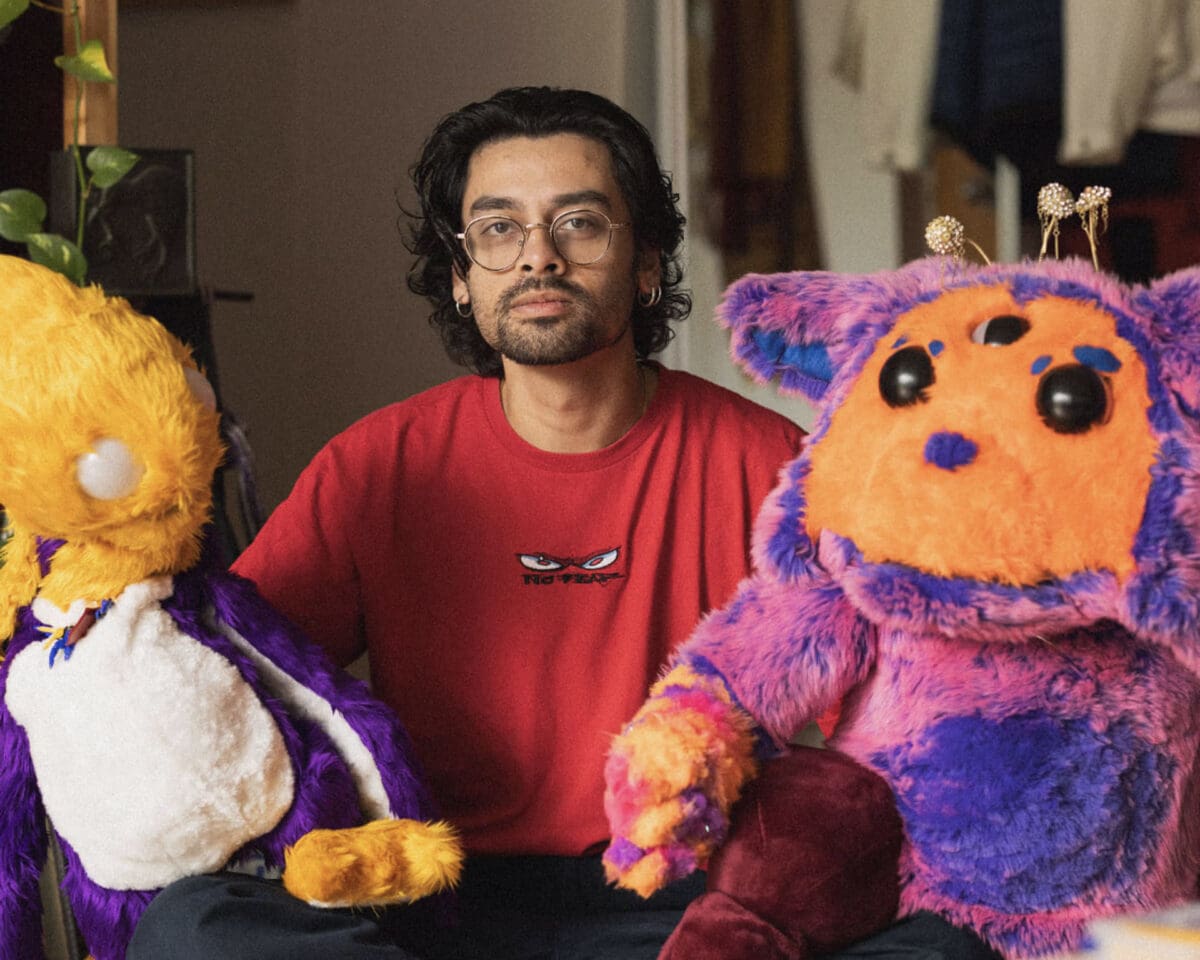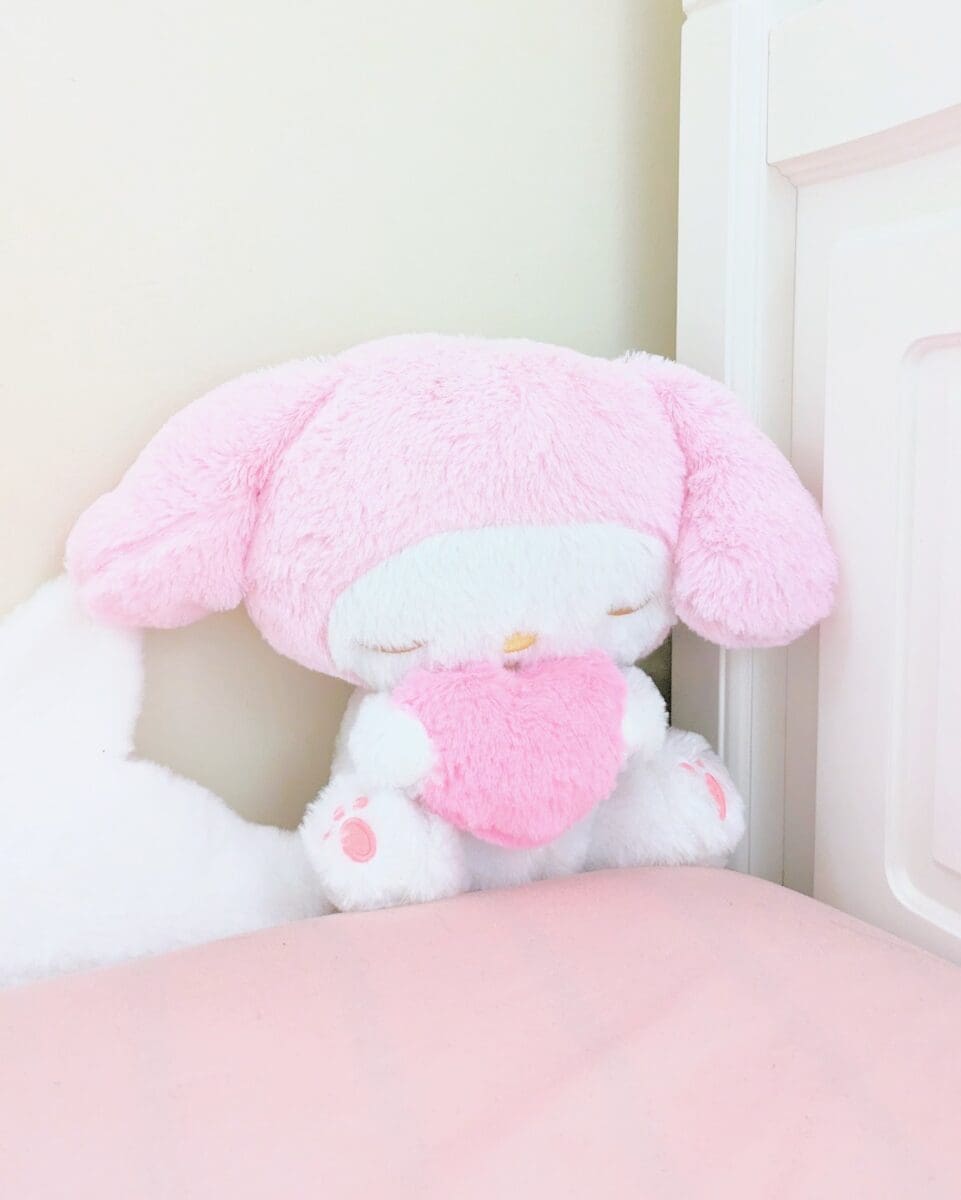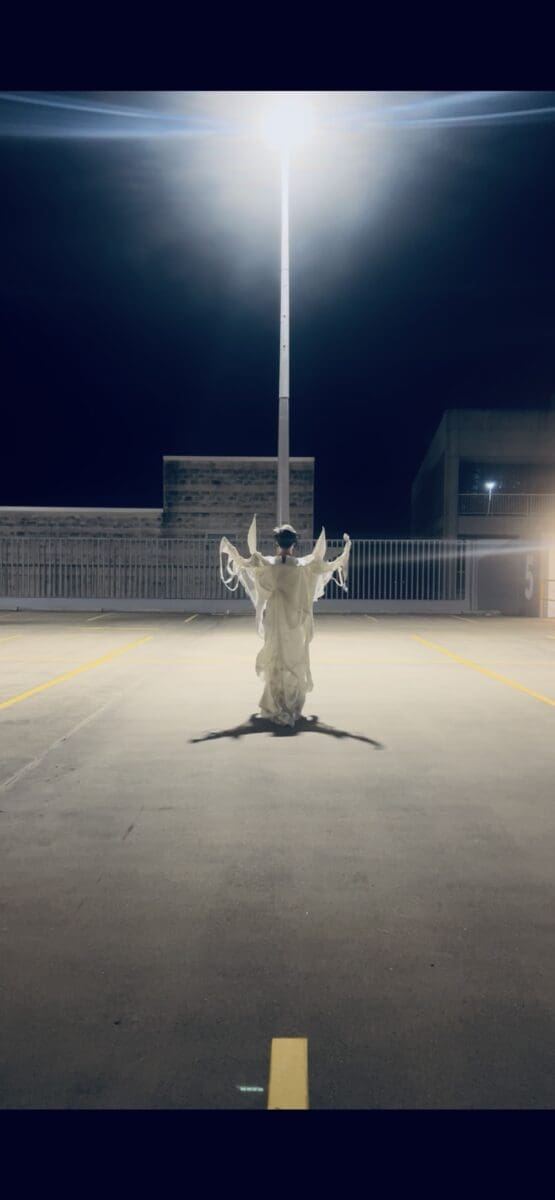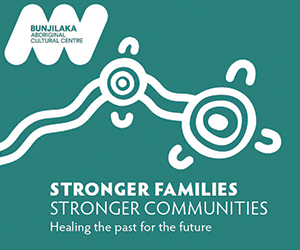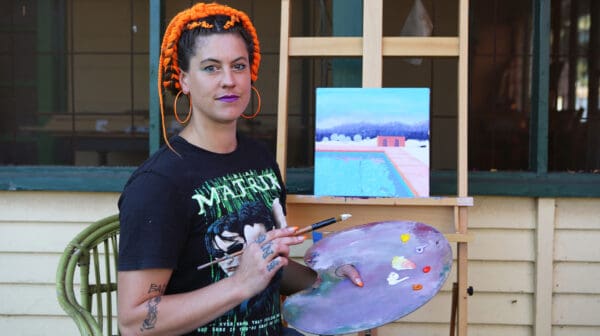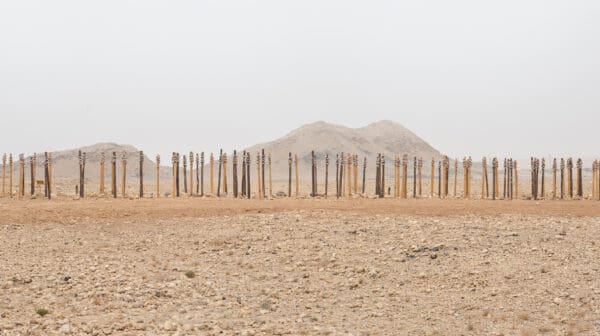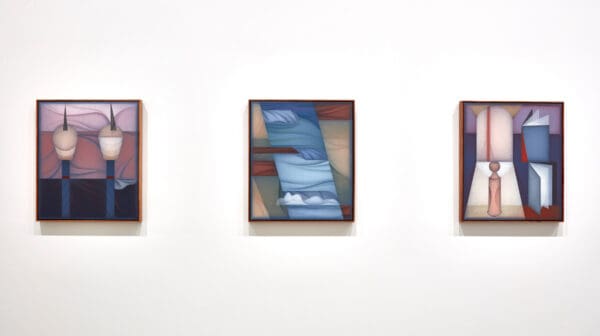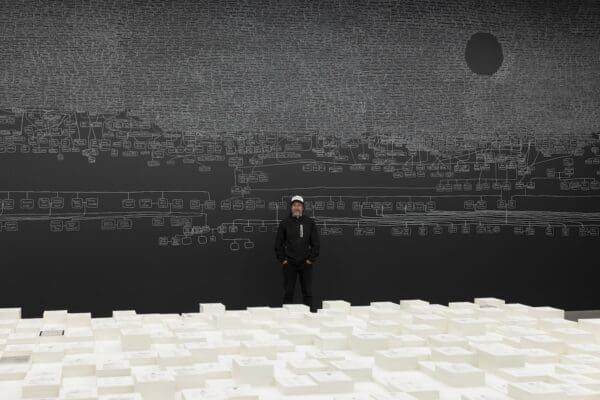Finding points of convergence and connection through gaming and digital culture, Ghost in the Machine brings together works by Celacious666 (Celine Cheung), Rainer Ciar, Fei Gao and Kalanjay Dhir at Outer Space, Magandjin/Brisbane. Inspired by different genres of fiction and digital media, the artists consider avatars, ghosts, masks and levels of embodiment to ask: what if I’m more real when I’m projecting?
Rainer Ciar comes to the anime/manga genre of mecha with both a critical and open lens. Having met their partner through mecha, they have a fondness for the genre, while questioning whether this form of escapism is good or bad. Mecha focuses on giant robots or ‘mechs,’ typically piloted by humans, and often depicted in battle settings. Ciar explains, “We exist in this nebulous grey area, where we explore, while co-existing with the negative parts of it. I’m inspired by the sci-fi militaristic elements and potential of the giant robot.”
Ciar presents a three metre tall wall mural and a series of smaller digital prints depicting these giant robots and pilots, presented out of context. There is a play between the miniaturisation of the robots in the prints, and monumentality of them in the mural—a more truthful reflection of their size. The work explores layers of embodiment and scale. Ciar considers how the characters within these fictions can be part of ’bad’ systems (e.g. military, industrial, corporate bodies), while also fighting against them. Contemplating the ways this translates to our human world, Ciar asks how “people can have a desire to be part of these systems, while accepting their positions within them.” Ciar notes, “often the show writers are quite anti-war, even while working in a ‘war genre’. I’m dissecting these mixed-messages and the tension between different layers of intentionality.”
Working through installation, by way of puppetry and digital means, Kalanjay Dhir draws on popular culture, sci-fi and history to make up near-futures, examining the ways humans relate to their environments. As Cheung explains, “There is an ecological message in Kal’s work. Kal considers how sub-cultures of technologies can be in parallel to the health of the planet, and more broadly with people, family and community.”
When asked about the relevance of ‘ghosts’ and ‘avatars’, Cheung acknowledges that “different people will have different interpretations of these terms. I think of ‘ghosts’ as associated with the soul or mind—as something immaterial within our existence and being that is in opposition to the machine.” The machine, in this sense, refers to the body and more specifically to our human bodies. Cheung explains, “The machine becomes multiple things. In the world-view of this exhibition you can inhabit characters and be anything. This is how we engage with fiction and digital media. The ‘avatar,’ in this case, is the machine. When we present ourselves online there are many parts: it’s the illustrative icon, it’s the costume, it’s the character. The ‘avatar’ is all these things at once.” Digital avatars become vehicles that allow one to do things that would not be possible in a human body.
Celacious666 presents an installation, consisting of elements driven by illustration. Cheung designed characters based on the three artists in the show, building a fan-fiction around an artist-run gallery, referencing the history of PARI—an artist-run-initiative in Parramatta, NSW where the artists met. Gao explains, “Celine’s work is about fictional characters, built off real people and real situations. Celine’s role is that of narrator. Sometimes you can trust the narrator and sometimes you can’t.” When encountering Ghost in the Machine, the audience needs to consider the boundaries between reality and fiction and decide where their trust should lie.
Gao’s research into trauma, with a focus on attachment theories, sees the artist present a costume and associated performance, examining “the tension between the need to keep people close and push them away.” When I queried if this was reflective of the tension between being alone and finding connection through digital experiences, Celine explained, “we often engage with games or digital media in an isolated context—within the confines of our bedrooms or on a device. At the same time these mediums allow us to connect with communities of people. Fan-fiction is a genre that gels people together, even though it’s often consumed in isolation. You are not truly isolated when your works are embraced online.” Interested in how people turn to gaming as a mechanism to escape real-life problems, Gao notes that “it’s not just pure escapism, it’s a medium for people to safely explore their issues.” Gao’s interest in gaming as a cathartic space, speaks to the power of community and connection that gaming and digital media create.
Ciar admits, “It’s been difficult to frame the exhibition. We all work within digital culture, but this isn’t as much a digital show. We’re inspired by embodiment and physicality and how we can project ourselves onto different characters.” The artists in Ghost in the Machine are using digital realms as metaphor and means to understand the complexities of the human world, while finding new avenues for connection, understanding and exchange.
Ghost in the Machine
Celacious666, Rainer Ciar, Fei Gao and Kalanjay Dhir
Outer Space, Magandjin/Brisbane QLD
Until 28 June

